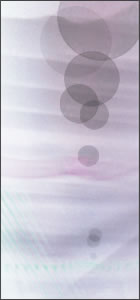


Qigong Therapy
| Yang Health Center |
The concept of qi
Similar to the theory of yin-yang, qi was derived from ancient Chinese philosophy, which
believes everything is related. In traditional Chinese medicine, qi is treated as the fundamental
physiological sense constitutes, replenishes and nourishes the human body. Qi is often called
“vital energy” because it is believed to be the motive energy derived from the essential
substance for various vital processes.
Qi is often classified according to what it acts on. For example, the heart-qi refers to the force
with which the heart works and the blood circulates, so it regulates the cardiac function; the
stomach-qi refers to the force with which the stomach functions, so it regulates the gastric
function. The qi that maintains normal functioning for resistance against disease is called zheng-
qi, which means genuine energy or body resistance. The qi that warms the body and maintains
normal body temperature is called yang-qi, which is similar to the heat energy. Metabolism of
materials and energy also depends on the action of qi, including metabolism of blood, fluids and
other essential materials.
Qi is formed from the inhaled oxygen, the dietary nutrients, and the inborn primordial qi stored in
the kidney, which may be genetically related. Qi circulates along meridians and collaterals. A
healthy body requires normal circulations of qi. Health problems occur if the flow of qi is
stagnated. The circulation of qi is also closely related to mental conditions. Emotional instability
may cause the stagnation of qi. For example, anger may lead to dizziness, headache, distress
in the hypochondriac regions, or distention in the stomach with impairment of appetite. On the
other hand, the exercise of mind can help the circulation of qi, which is the purpose qigong
exercise.
General methods of qigong
Qigong is an exercise to regulate the mind and breathing in order to control or promote the flow
of qi. Since qi plays such an important role in the vital processes of the human body, the
regulation of qi flow is therefore be used to preserve health and treat disease. Medical qigong,
the qi exercise practiced to prevent and treat disease, is different from general physical
exercise. While physical exercise is aimed at building up health or restoring physical functioning
by enhancing strength, medical qigong is focused on the mobilization of functional potentialities
by regulating the mind. In other words, physical exercise is purely somatic, while qigong
exercise is generally psycho-somatic. Another important difference between physical exercise
and qigong is that physical exercise expends energy by tensing the muscles and accelerating
the heart beat and respirations, while qigong works to ease, smooth and regulate breathing to
store up or accumulate energy in the body.
Medical qigong can be divided into two main categories: internal qigong, which is practiced by
the patients themselves to preserve and promote their own health, and external qigong, which
is performed by a qigong master on a person with health problems. Practicing internal qigong
requires regulation of the mind, body and respiration. There are many kinds of internal qigong,
some with motion and others without. Qigong can be practiced while sitting still, standing
upright, or lying on the back or side. The basic requirement is to stay comfortable and relaxed.
Similar to the theory of yin-yang, qi was derived from ancient Chinese philosophy, which
believes everything is related. In traditional Chinese medicine, qi is treated as the fundamental
physiological sense constitutes, replenishes and nourishes the human body. Qi is often called
“vital energy” because it is believed to be the motive energy derived from the essential
substance for various vital processes.
Qi is often classified according to what it acts on. For example, the heart-qi refers to the force
with which the heart works and the blood circulates, so it regulates the cardiac function; the
stomach-qi refers to the force with which the stomach functions, so it regulates the gastric
function. The qi that maintains normal functioning for resistance against disease is called zheng-
qi, which means genuine energy or body resistance. The qi that warms the body and maintains
normal body temperature is called yang-qi, which is similar to the heat energy. Metabolism of
materials and energy also depends on the action of qi, including metabolism of blood, fluids and
other essential materials.
Qi is formed from the inhaled oxygen, the dietary nutrients, and the inborn primordial qi stored in
the kidney, which may be genetically related. Qi circulates along meridians and collaterals. A
healthy body requires normal circulations of qi. Health problems occur if the flow of qi is
stagnated. The circulation of qi is also closely related to mental conditions. Emotional instability
may cause the stagnation of qi. For example, anger may lead to dizziness, headache, distress
in the hypochondriac regions, or distention in the stomach with impairment of appetite. On the
other hand, the exercise of mind can help the circulation of qi, which is the purpose qigong
exercise.
General methods of qigong
Qigong is an exercise to regulate the mind and breathing in order to control or promote the flow
of qi. Since qi plays such an important role in the vital processes of the human body, the
regulation of qi flow is therefore be used to preserve health and treat disease. Medical qigong,
the qi exercise practiced to prevent and treat disease, is different from general physical
exercise. While physical exercise is aimed at building up health or restoring physical functioning
by enhancing strength, medical qigong is focused on the mobilization of functional potentialities
by regulating the mind. In other words, physical exercise is purely somatic, while qigong
exercise is generally psycho-somatic. Another important difference between physical exercise
and qigong is that physical exercise expends energy by tensing the muscles and accelerating
the heart beat and respirations, while qigong works to ease, smooth and regulate breathing to
store up or accumulate energy in the body.
Medical qigong can be divided into two main categories: internal qigong, which is practiced by
the patients themselves to preserve and promote their own health, and external qigong, which
is performed by a qigong master on a person with health problems. Practicing internal qigong
requires regulation of the mind, body and respiration. There are many kinds of internal qigong,
some with motion and others without. Qigong can be practiced while sitting still, standing
upright, or lying on the back or side. The basic requirement is to stay comfortable and relaxed.

| 10640 North College Ave. Indianapolis, IN - 46280 (317)340-1427 (317)816-4006 |
Chinese Acupuncture and Spine Care
Please call (317) 816-4006 or (317) 340-1427 for a consultation.


